Isoscel-Ease the Drawing Robot
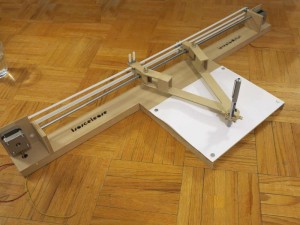 I learned a bit from making the Art-O-Matic swirling-drawing robot. The new Isoscel-Ease drawing robot uses triangular geometry rather than scissor geometry (other drawing robots).
I learned a bit from making the Art-O-Matic swirling-drawing robot. The new Isoscel-Ease drawing robot uses triangular geometry rather than scissor geometry (other drawing robots).
The two arms holding the pen are the same length forming an isosceles triangle. So you can probably figure out why I called this machine Isoscel-Ease.
The arms are belt driven using a linear rail rather than rotary gears like Art-O-Matic. The scissor-rotary system of the Art-O-Matic could not follow all paths on the paper. But the Isoscel-Ease has more freedom to move in any direction at any point on the paper.
The machine came together very well. The linear rail is in compression and the belts and base are in tension so the rigidity seems pretty good. I did add a skirt to the base to increase stiffness.
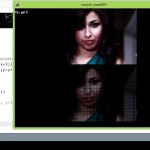 I decided to start to work on portraits right away so I’m already working in processing.org to do image analysis in order to create pen paths for Isoscel-Ease. I worked on it a few hours last weekend and got pretty far. I should be trying my first portrait pretty soon!
I decided to start to work on portraits right away so I’m already working in processing.org to do image analysis in order to create pen paths for Isoscel-Ease. I worked on it a few hours last weekend and got pretty far. I should be trying my first portrait pretty soon!
This thing will be fairly portable so I can tote it around and work on the software .
Well, not quite as portable as Art-O-Matic but it will do. 🙂
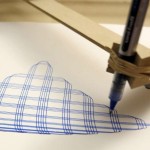
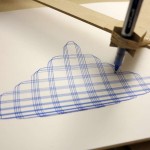
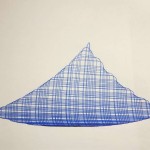
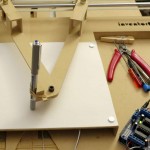

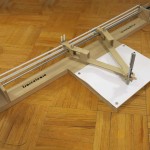
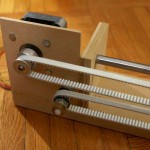
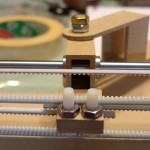
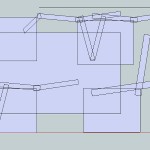

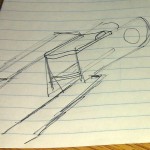
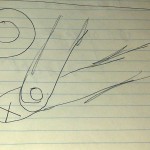
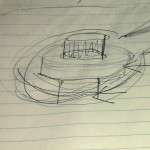
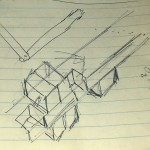
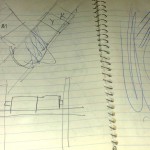
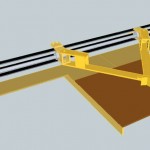
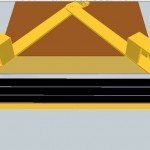
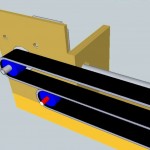
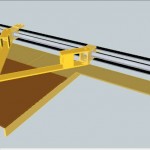
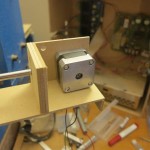
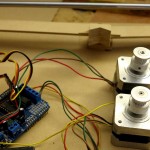

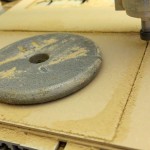
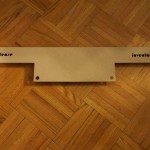
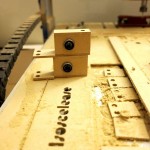
http://pumpingstationone.org/2013/06/cnc-gonzo-build-2-recap/
http://forums.reprap.org/read.php?178,289330
Here is a good thread. You can PM the creator from there.
Again, the math will be much nicer if you go with the Tuga geometry. It is really quite elegant. If you turn one stepper, you get a y translation. If you turn both steppers, you get an x translation. The inverse kinematics require one square root and not inverse trig functions.
Yeah, that geometry is very interesting. I expect to make several of these machines… So that one will definitely come forward.
This is awesome.
You can make the inverse kinematics a bit nicer if you put the pen inline with the arm. There is a 3D printer (RepRap Tuga) that uses this style and if I am not mistaken the firmware already exists that will let you run boring Cartesian gcode on a machine like this. http://youtu.be/VRkYpnTxO_M
Let me know if you need any contacts.
Hello!
Thanks for the note. I’d love to try that firmware. Feel free to send me the contacts.
Very cool project! I think you might be interested in this example of an unusual conversion of photographic imagery to line work. I had some great luck with some variations of this example, hope you do too.
http://www.openprocessing.org/sketch/59807
Oh, thanks for that! I’ll have a look at it. I’m looking at some bitmap work but I definitely want to make some lines too!
Um, these are some of my notes from the software development side of the project.
http://www.processing.org/tutorials/pixels/
http://wiki.processing.org/w/What_is_a_color_in_Processing%3F
http://hackaday.io/project/895-Roboartist
http://sspog.wordpress.com/code-examples/processing-to-arduino-strings-bigger-than-64-bytes/
http://processing.org/discourse/beta/num_1263296127.html
https://learn.sparkfun.com/tutorials/serial-communication
https://learn.sparkfun.com/tutorials/connecting-arduino-to-processing/all